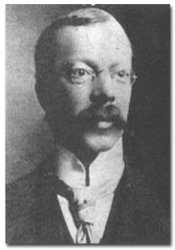
God started tiling Tasmania, but he ran out of grout.
Either that or erosion has exaggerated some natural fractures, producing this remarkable tessellation at Eaglehawk Neck.
One or the other.

God started tiling Tasmania, but he ran out of grout.
Either that or erosion has exaggerated some natural fractures, producing this remarkable tessellation at Eaglehawk Neck.
One or the other.
(1) If a thing can’t be done without something wrong being done, then the thing itself is wrong.
(2) If X is impossible and Y is wrong, then I can’t do both X and Y, and I can’t do X but not Y.
But if Y is wrong and doing X-but-not-Y is impossible, then by (1) it’s wrong to do X.
Hence if it’s impossible to do a thing, then it’s wrong to do it.
Yet worse was the condition of the editor who, having in a touching obituary notice of a soldier described the deceased as a ‘battle-scarred veteran,’ was driven frantic to find in the morning that the types had made him write of a ‘battle-scared veteran.’ The next day he published the following apology for the blunder: ‘The editor was deeply grieved to find that through an unfortunate typographical error he was made to describe the late gallant Major H. as a “battle-scared veteran.” He tenders his sincerest apologies for the mistake to the friends and relatives of the deceased; but to every reader of this journal acquainted with the feats of the major, it must have been apparent that what the editor wrote was bottle-scarred veteran.’
— “Some Humors of the Composing-Room,” Macmillan’s Magazine, December 1897
Risqué limericks by W.H. Auden:
There was a young poet whose sex
Was aroused by aesthetic effects;
Marvell’s The Garden
Gave him a hard-on
And he came during Oedipus Rex.
Said the Queen to the King: “I don’t frown on
The fact that you choose to go down on
My page on the stairs
But you’ll give the boy airs
If you will do the job with your crown on.”
The Bishop-Elect of Hong Kong
Has a cock which is ten inches long;
He thinks the spectators
Are admiring his gaiters
When he goes to the Gents–he is wrong.
“Poetry is nobody’s business except the poet’s,” wrote Philip Larkin, “and everybody else can fuck off.”

Hughie Jennings was a baseball magnet. In five seasons with the Baltimore Orioles, Jennings was hit by pitches 202 times, sometimes thrice in a single game. In 1896 alone he was hit 51 times, a record that has stood for a century.
Getting hit can be a deliberate tactic, but Jennings did it regardless of the game situation. The Sporting Life wrote, “He seemed unable to convey the sense of danger from his brain to his limbs.” He wore crude pads under his uniform, but the repeated blows — 287 in his major-league career — left him black and blue; after one game he collapsed and remained unconscious for three days.
Curiously, the beatings continued off the field. At Cornell, where he earned a law degree, Jennings dove into a swimming pool one night only to discover it was empty. And in a 1911 auto accident he broke three limbs and suffered a concussion.
All this damage took its toll. At the end of the 1925 season Jennings had a nervous breakdown, and three years later he was dead. But he seemed philosophical about his bruises. “Life is full of trials,” he said, “which is a good thing for lawyers.”
Each of these pairs of numbers contains the 10 digits:
57321 60984
35172 60984
58413 96702
59403 76182
Square any one of them and it will grow into its own 10-digit pandigital number.
acephalist
n. one who acknowledges no superior
“In America everybody is of the opinion that he has no social superiors, since all men are equal, but he does not admit that he has no social inferiors, for, from the time of Jefferson onward, the doctrine that all men are equal applies only upwards, not downwards.” — Bertrand Russell

He does look evil, doesn’t he?
Hawley Harvey Crippen had fled for America by the time Scotland Yard discovered his wife’s torso under the brick floor of his London house.
But they sent out a warning, and the captain of the SS Montrose thought he recognized the fugitive aboard his ship. He asked his wireless telegraphist to send a message to the British authorities: “Have strong suspicions that Crippen London cellar murderer and accomplice are among saloon passengers. Mustache taken off growing beard. Accomplice dressed as boy. Manner and build undoubtedly a girl.”
Chief Inspector Walter Dew overtook the Montrose in a faster liner and boarded her in the St. Lawrence River disguised as a pilot. When introduced to Crippen, he said (resoundingly, one hopes), “Good morning, Dr. Crippen. Do you know me? I’m Chief Inspector Dew from Scotland Yard.”
Crippen hesitated, then said, “Thank God it’s over. The suspense has been too great. I couldn’t stand it any longer.”
Crippen’s mistress was acquitted, but he was hanged in 1910, the first criminal in history captured by the aid of wireless.
See STOP.

“A universe simple enough to be understood is too simple to produce a mind capable of understanding it.” — Cambridge cosmologist John Barrow
The antiquarian has always been the object of hoaxes. At a convention of the tribe in Banbury, on one occasion, a worn and ancient looking block of stone was sent in with the information that it had been the corner stone of an old building recently torn down. The finders prayed the learned body to interpret the inscription upon it, which read:
SEOGEH SREV EREH WCISUME VAHL LAH SEHS SE OTREH NOS LLEBD NAS REGNI FREH NOS GNIRES ROHYAR GANOED IRYD ALE NIFAE ESOTS SORCY RUB NABOT ES ROHK CO CAED IR.
It took the venerable society several days to discover that the sentiment was ‘Ride a cock horse’ inverted.
— William S. Bridgman, “Famous Hoaxes,” Munsey’s Magazine, August 1903